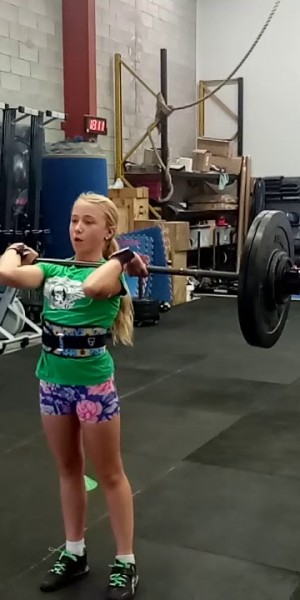General: Try not to think of each of the components of this workout in individual terms but rather how each exercise will relate to each other. The biggest mistake people will make when looking at this one is to use their times from individual efforts on these movements as a benchmark for this workout. The fact that you can do a 2.30 Grace is not that relevant in this workout if you dig yourself into a massive hole by going out a max pace in the row. The best scores will come from people who know where to push and where to hold back based on how each movement interacts with the other. Think of a good time for each of the exercises and add a significant amount of fat – this should help you strategise and set time goals for completion of each movement.
Finally, wear weightlifting shoes (they will offer more advantage in the wall ball, cleans and even row than they will disadvantage the T2B or MU) and make sure your hands and wrists are taped up.
Row: I would strongly caution against going out hard on the rower unless you have a huge amount of confidence in your ability to continue to work. The difference between a really fast 60 calories and a medium 60 calories is about 45 seconds. 45 seconds will feel like a lot when you’re still sitting on the rower, but when you come off the rower in a much more composed state you will make up the 45 seconds many times over throughout the rest of the workout.
Don’t assume that the highest damper setting is the best. Once again the row is all about balance between time and energy expenditure and if you row at a damper setting that is a few levels too high its going to tax you way more than a few extra strokes a minute at a lower damper setting will. Also, don’t discount rowing with a lower effort/higher stoke rate. You will of course have to do more strokes to get the work done but if you can save filling your legs with lactic acid and skyrocketing your heart rate, it’s a good thing.
Toes to Bar: Scott Panchik took about 2 minutes to do his T2B which is a really good time considering the pace he hit his row at. Most of you are NOT Scott Panchik. 10 T2B takes about 10 seconds, so someone with good ability on the T2B should be able to hold sets of 10 on a 30 second cycle. This will see you finished the T2B in 2.30 which is still a very respectable time with plenty of rest built in. For people with lesser ability – the same old story of avoiding absolute failure applies here. Try to avoid singles unless they are absolutely necessary. A few extra seconds break between each set could see you holding 2’s and 3’s which works out much better over the course of 50 reps.
Wall Ball: My suggestion for the WB is to have some goals in your head. You can generally always do a few extra reps of WB than you really want to and having some goal numbers will keep you accountable.
Also, don’t avoid the bottom position – putting the breaks on to decelerate the ball so that you only just break parallel takes more energy than going through the bottom of the squat and once again, don’t go to exhaustion – the cleans are up next. Something like 20-12-8 should work well.
Power Cleans: The fact that Bridges and Panchik were doing singles at this point should be enough to tell you this is harder than what it looks. Singles are not as slow as they seem so long as you keep moving and get back on the bar straight after the bounce. I would caution doing big sets of touch and go PC’s unless you’re a beast at these – muscle ups are next and if you cook yourself in the cleans you could waste a lot of time staring at the rings.
Muscle-ups: Avoid working to failure in these! Pick some goals based on your ability with this movement and pull short of failure by a rep or two each time you’re on the rings (if you’re doing multiples). If you’re a singles person, take a measured approach between efforts. A second or two extra rest before the next rep increases the likelihood of success by a lot and a wasted reps costs a lot in time and wasted energy.
Remember that there are many ways to skin a cat. While the no false grip/kipping reps feel quick, they are a big movement that involve a lot of muscles and coordination. I have had good success with doing bigger sets until I am fatigued and then reverting back to singles with a false grip. The false grip will allow you to rely a bit more on upper body strength which may make the difference when your heart rate is maxed.
Finally check out our tutorial videos on T2B, Power Clean, Wall Ball and Muscle-ups.


